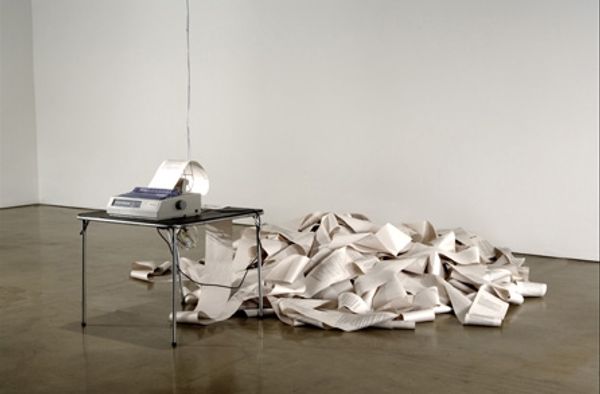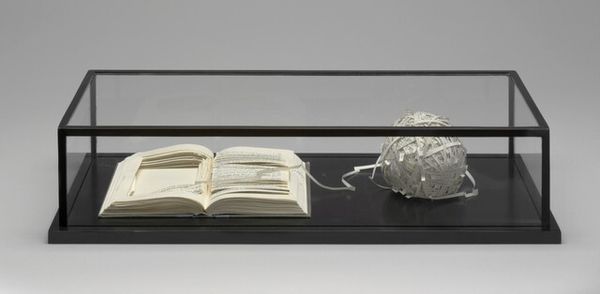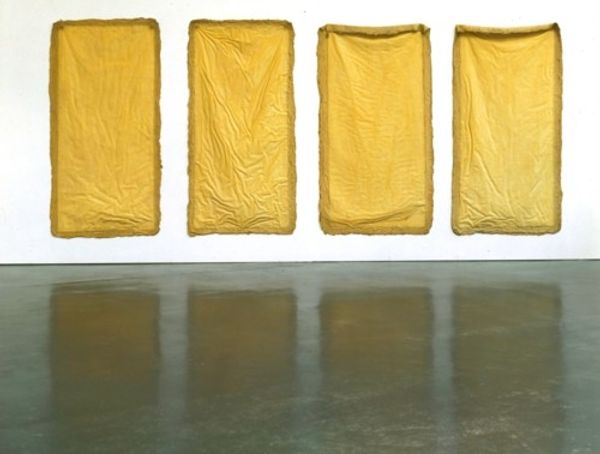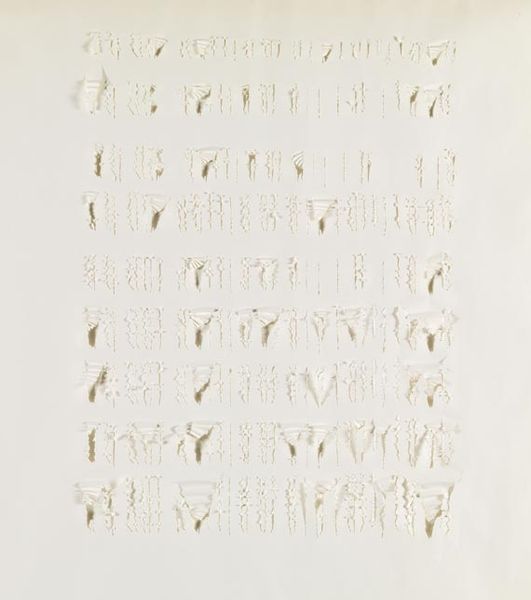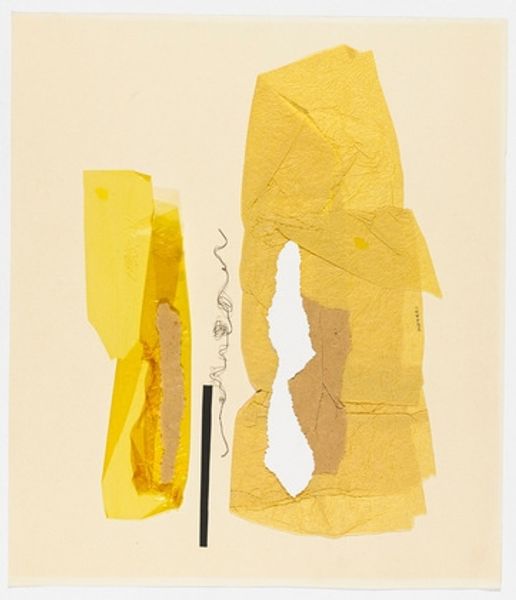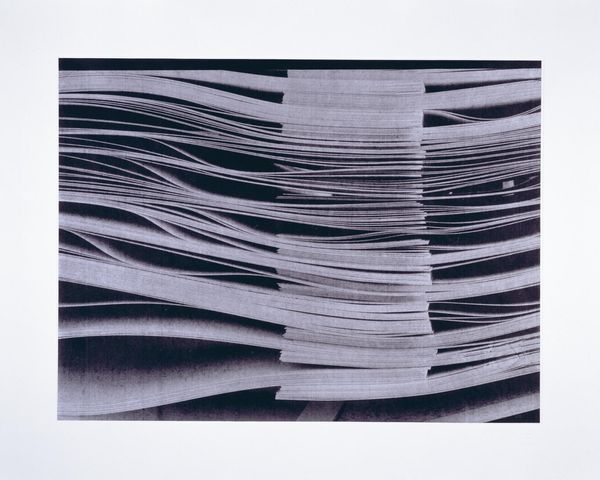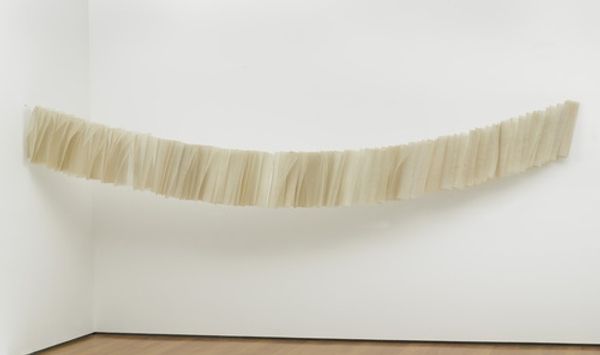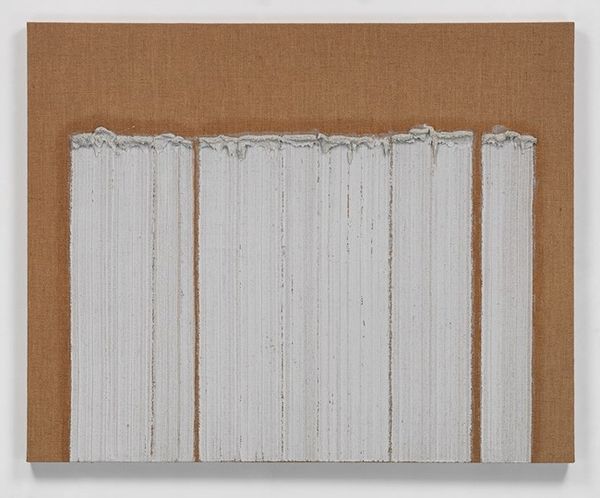
paper
#
photo of handprinted image
#
white backdrop
#
pastel soft colours
#
3d printed part
#
light coloured
#
white palette
#
bright focal point
#
paper
#
white focal point
#
watercolour bleed
#
printed materiality
Copyright: Oskar Holweck,Fair Use
Curator: This artwork is entitled "13 IV 82 (Buchobjekt)," created by Oskar Holweck in 1982. It's crafted primarily from paper. What are your initial thoughts? Editor: The overwhelming sensation is one of fragility. The stacked paper and the way it's been manipulated—it almost appears to be breathing, or perhaps on the verge of collapsing. I wonder about the process of achieving such delicacy with paper, a common yet versatile material. Curator: Holweck's practice often explored the potential of everyday materials to transcend their mundane existence. In "13 IV 82 (Buchobjekt)," the repetitive, rhythmic stacking of paper generates a powerful visual field. One could see in its structure a subtle invocation of serialism, a common conceptual approach in art of the period. Editor: Serialism in the arrangement is interesting. But it's also impossible to ignore the labor, the sheer repetitiveness, implied in such careful layering. Each sheet had to be selected, folded or bent perhaps? Considering the artist's hand, transforming basic paper into something quite extraordinary. And also, the subtle tones created by shadow, and staining, or ageing of the paper is interesting - like an analogue photograph being developed. Curator: Exactly, the inherent qualities of the paper—its texture, weight, and capacity to reflect light—are all carefully orchestrated. Holweck has completely dissolved the boundary between the two-dimensional page and sculptural form, allowing space to perform a structural function. Note the negative spaces and how essential they are to reading the whole structure. Editor: Looking closer, it appears not just folded or bent, but subtly aged or marked, introducing elements of decay. It is exciting that simple ageing marks contribute to the visual complexity of this art work, and is the labor implied by all the sheets a commentary on disposable consumer culture? A redemption? Or is that reading too much? Curator: These paperworks also challenge established ideas around art, pointing towards dematerialization. Its ephemerality is both delicate and potentially transient. The work’s value doesn’t reside in the preciousness of the medium but in the visual experience. Editor: Perhaps that is the magic of Holweck's work then. It coaxes significance out of the common, elevating the throwaway and reminding us to reconsider what we value. It has the ability to prompt reflection on material culture, which would normally not be attributed to a paper work with a simple title, like the date of its execution. Curator: A truly compelling example of material transformed into the metaphysical, don't you think? Editor: Indeed. Something humble, elevated.
Comments
No comments
Be the first to comment and join the conversation on the ultimate creative platform.
